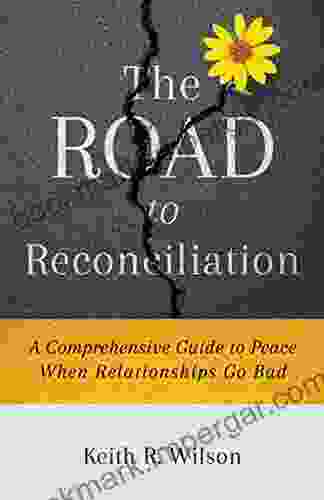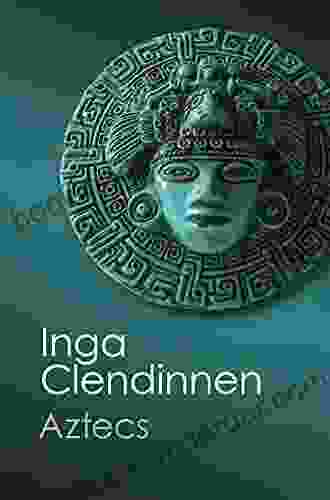Aztecs: An Interpretation - A Captivating Journey into the Ancient Mesoamerican Civilization

4.6 out of 5
| Language | : | English |
| File size | : | 10171 KB |
| Text-to-Speech | : | Enabled |
| Screen Reader | : | Supported |
| Enhanced typesetting | : | Enabled |
| Word Wise | : | Enabled |
| Print length | : | 574 pages |
In the annals of history, the Aztecs stand as a beacon of brilliance and a testament to the indomitable spirit of humankind. Their empire, stretching across the vast expanse of Mesoamerica, was a marvel of architectural ingenuity, cultural sophistication, and political finesse. Yet, beneath the veneer of their grandeur, the Aztecs harbored a deep-seated mysticism and a complex worldview that continue to captivate scholars and enthusiasts alike.
Unveiling the Aztec Empire
The Aztec Empire emerged in the 14th century, its roots firmly planted in the fertile valleys of central Mexico. Over the course of a century, they expanded their dominion through a combination of military prowess and diplomatic alliances, establishing a vast network of tributary states. At its peak, the empire encompassed an area of over 200,000 square kilometers, stretching from the Gulf of Mexico in the east to the Pacific Ocean in the west.
The Aztec capital, Tenochtitlan, was a marvel of engineering and architectural brilliance. Built on an island in the middle of Lake Texcoco, the city boasted elaborate temples, sprawling palaces, and bustling marketplaces. Its canals and causeways connected the various districts, creating a vibrant and interconnected urban center. The Aztec Empire was a testament to the ingenuity and organizational skills of its people.
Exploring Aztec Culture
Beyond their political achievements, the Aztecs were renowned for their rich and sophisticated culture. Their artistic traditions, rooted in deep religious beliefs, produced exquisite sculptures, intricate codices, and breathtaking murals that adorned their temples and palaces. Music and dance played an integral role in their religious ceremonies and social gatherings, showcasing the vibrant and expressive nature of Aztec society.
Aztec society was highly stratified, with the emperor, known as the Huey Tlatoani, at its apex. The nobility, priests, and warriors formed the elite class, while the common people, including farmers, artisans, and merchants, made up the majority of the population. Despite this social hierarchy, the Aztecs valued education and intellectual pursuits, establishing schools called calmecac and telpochcalli where young men and women received instruction in literature, history, mathematics, and military arts.
Deciphering Aztec Religion and Mythology
Religion played a central role in Aztec life, shaping their worldview and guiding their social and political structures. They believed in a pantheon of gods and goddesses, each associated with specific aspects of nature and human existence. The supreme god, Huitzilopochtli, was the patron of the Aztecs and the embodiment of the sun and war. Other important deities included Tlaloc, the god of rain and agriculture; Quetzalcoatl, the feathered serpent associated with wisdom and creation; and Coatlicue, the earth goddess.
Aztec mythology was a complex tapestry of creation stories, heroic tales, and apocalyptic prophecies. Their sacred texts, known as codices, provide valuable insights into their beliefs and rituals. The Aztecs believed in a cyclical view of time and considered human sacrifice an essential part of maintaining the balance of the universe.
The Spanish Conquest and its Aftermath
The arrival of Hernan Cortes and the Spanish conquistadors in 1519 marked a turning point in Aztec history. With superior weaponry and the support of native allies, the Spanish gradually gained a foothold in Mesoamerica. After a protracted siege, Tenochtitlan fell in 1521, and the Aztec Empire crumbled under the weight of European conquest.
The conquest had a profound impact on Aztec society. Disease, warfare, and forced labor decimated the population, and their cultural traditions were suppressed. Yet, the legacy of the Aztecs endured. Their art, architecture, and ideas continued to influence Mexican culture and identity, shaping the nation that emerged from the ashes of the ancient empire.
Exploring 'Aztecs: An Interpretation' by Canto Classics
Canto Classics' 'Aztecs: An Interpretation' is a comprehensive and engaging work that delves into the fascinating world of the Aztec civilization. Written by renowned scholars and experts, this book offers a multidisciplinary perspective on Aztec history, culture, religion, and legacy. Through a vivid narrative and carefully curated illustrations, 'Aztecs: An Interpretation' brings this ancient civilization to life.
The book explores the rise and fall of the Aztec Empire, providing insights into their political strategies, economic systems, and social structures. It unravels the mysteries of Aztec religion and mythology, delving into their beliefs, rituals, and sacred texts. 'Aztecs: An Interpretation' also showcases the artistic brilliance of the Aztecs, examining their sculptures, codices, and architectural wonders.
Through a balanced and nuanced approach, 'Aztecs: An Interpretation' challenges stereotypes and offers a deeper understanding of this complex and enigmatic civilization. It is an essential read for students, scholars, and anyone fascinated by the history and culture of ancient Mesoamerica.
The Aztecs left an indelible mark on the tapestry of human history. Their empire, culture, and legacy continue to inspire and intrigue people around the world. 'Aztecs: An Interpretation' by Canto Classics is a captivating and authoritative guide to this ancient civilization, providing a comprehensive and nuanced understanding of its multifaceted nature. By delving into the pages of this book, readers will embark on a captivating journey through the enigmatic world of the Aztecs, unraveling the secrets of their past and gaining a profound appreciation for their enduring legacy.
4.6 out of 5
| Language | : | English |
| File size | : | 10171 KB |
| Text-to-Speech | : | Enabled |
| Screen Reader | : | Supported |
| Enhanced typesetting | : | Enabled |
| Word Wise | : | Enabled |
| Print length | : | 574 pages |
Do you want to contribute by writing guest posts on this blog?
Please contact us and send us a resume of previous articles that you have written.
 Book
Book Novel
Novel Page
Page Chapter
Chapter Text
Text Story
Story Genre
Genre Reader
Reader Library
Library Paperback
Paperback E-book
E-book Magazine
Magazine Newspaper
Newspaper Paragraph
Paragraph Sentence
Sentence Bookmark
Bookmark Shelf
Shelf Glossary
Glossary Bibliography
Bibliography Foreword
Foreword Preface
Preface Synopsis
Synopsis Annotation
Annotation Footnote
Footnote Manuscript
Manuscript Scroll
Scroll Codex
Codex Tome
Tome Bestseller
Bestseller Classics
Classics Library card
Library card Narrative
Narrative Biography
Biography Autobiography
Autobiography Memoir
Memoir Reference
Reference Encyclopedia
Encyclopedia Richard O Rawe
Richard O Rawe Lisa London
Lisa London Sylvie Hampton
Sylvie Hampton Milton C Sernett
Milton C Sernett Mark Davids
Mark Davids Ian Dickerson
Ian Dickerson Jake Bernstein
Jake Bernstein J R Weil
J R Weil J Douglas Kenyon
J Douglas Kenyon Howard Garrett
Howard Garrett Jack Goldstein
Jack Goldstein Howard Mansfield
Howard Mansfield Ian Flood
Ian Flood Imtiaz Ahmed
Imtiaz Ahmed Stefan Wellek
Stefan Wellek Jack D Forbes
Jack D Forbes Ivan A Parinov
Ivan A Parinov Isaiah Robinson
Isaiah Robinson Jaclyn Hunt
Jaclyn Hunt Tony Seba
Tony Seba
Light bulbAdvertise smarter! Our strategic ad space ensures maximum exposure. Reserve your spot today!

 Ken SimmonsThe Comprehensive Guide to Peace When Relationships Go Bad: A Journey Towards...
Ken SimmonsThe Comprehensive Guide to Peace When Relationships Go Bad: A Journey Towards... Clark CampbellFollow ·8.4k
Clark CampbellFollow ·8.4k Martin CoxFollow ·17.9k
Martin CoxFollow ·17.9k Tyler NelsonFollow ·10.9k
Tyler NelsonFollow ·10.9k Jackson BlairFollow ·10k
Jackson BlairFollow ·10k Kyle PowellFollow ·18.4k
Kyle PowellFollow ·18.4k Ernesto SabatoFollow ·14k
Ernesto SabatoFollow ·14k Brian WestFollow ·19.6k
Brian WestFollow ·19.6k Carlos FuentesFollow ·18.2k
Carlos FuentesFollow ·18.2k

 Mike Hayes
Mike HayesUnlock Your Nonprofit Potential: A Comprehensive Guide to...
: Embarking on the Path to Impactful...

 Cody Russell
Cody RussellUnlock the Secrets of Captivating Radio Programming:...
In the fiercely competitive world of...

 Aron Cox
Aron CoxUnveiling the Enchanting World of Beth Inspired Eye...
A Realm of Imagination and Wonder Embark on...

 Felix Carter
Felix CarterUnlock the Secrets of Legal Publishing with West Hartford...
West Hartford Legal Publishing, the renowned...

 Henry Hayes
Henry HayesUnveiling the Secrets of the Panama Papers: Exposing...
The Panama Papers is a groundbreaking...
4.6 out of 5
| Language | : | English |
| File size | : | 10171 KB |
| Text-to-Speech | : | Enabled |
| Screen Reader | : | Supported |
| Enhanced typesetting | : | Enabled |
| Word Wise | : | Enabled |
| Print length | : | 574 pages |












